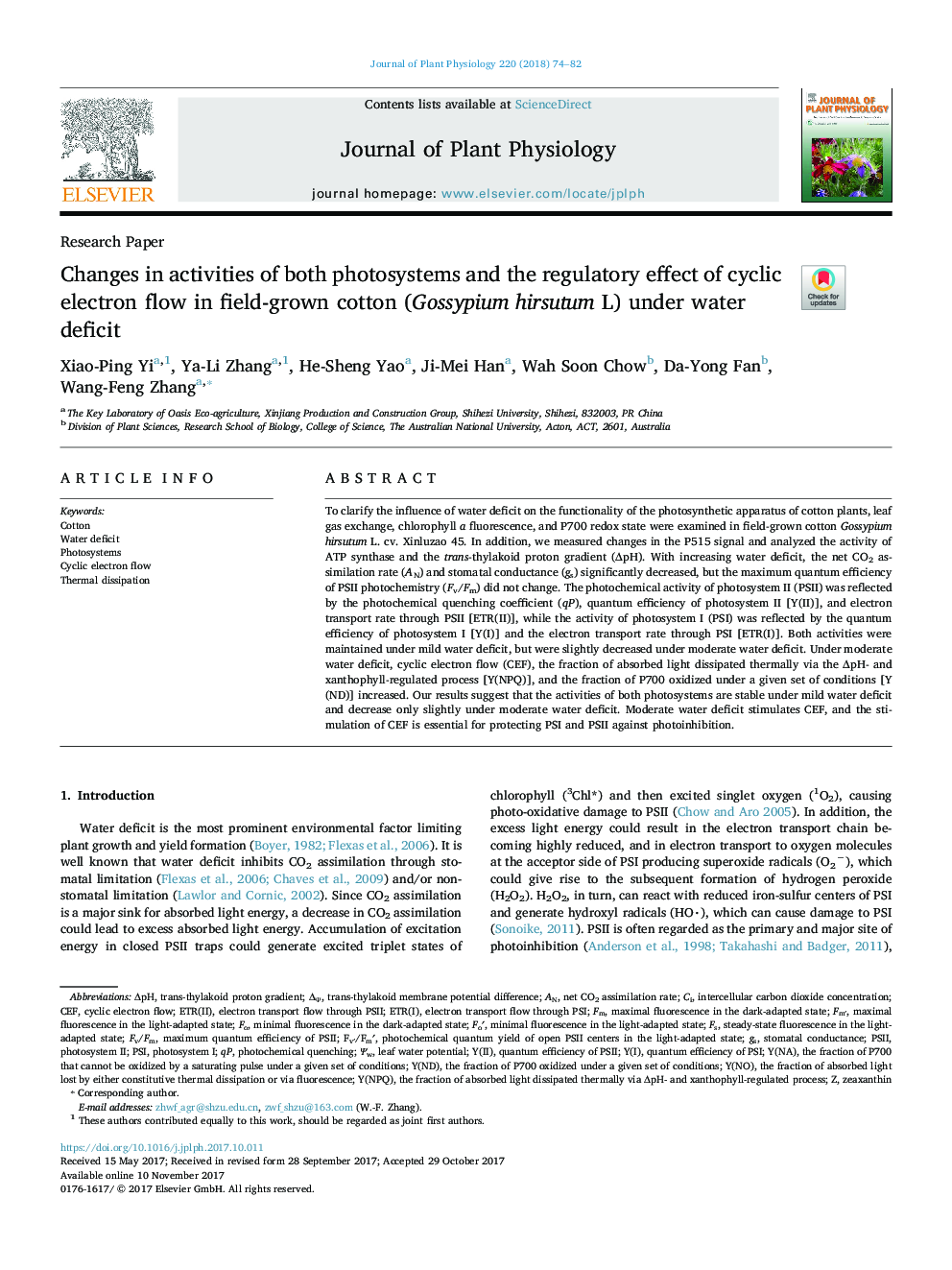| Article ID | Journal | Published Year | Pages | File Type |
|---|---|---|---|---|
| 8387031 | Journal of Plant Physiology | 2018 | 9 Pages |
Abstract
To clarify the influence of water deficit on the functionality of the photosynthetic apparatus of cotton plants, leaf gas exchange, chlorophyll a fluorescence, and P700 redox state were examined in field-grown cotton Gossypium hirsutum L. cv. Xinluzao 45. In addition, we measured changes in the P515 signal and analyzed the activity of ATP synthase and the trans-thylakoid proton gradient (ÎpH). With increasing water deficit, the net CO2 assimilation rate (AN) and stomatal conductance (gs) significantly decreased, but the maximum quantum efficiency of PSII photochemistry (Fv/Fm) did not change. The photochemical activity of photosystem II (PSII) was reflected by the photochemical quenching coefficient (qP), quantum efficiency of photosystem II [Y(II)], and electron transport rate through PSII [ETR(II)], while the activity of photosystem I (PSI) was reflected by the quantum efficiency of photosystem I [Y(I)] and the electron transport rate through PSI [ETR(I)]. Both activities were maintained under mild water deficit, but were slightly decreased under moderate water deficit. Under moderate water deficit, cyclic electron flow (CEF), the fraction of absorbed light dissipated thermally via the ÎpH- and xanthophyll-regulated process [Y(NPQ)], and the fraction of P700 oxidized under a given set of conditions [Y(ND)] increased. Our results suggest that the activities of both photosystems are stable under mild water deficit and decrease only slightly under moderate water deficit. Moderate water deficit stimulates CEF, and the stimulation of CEF is essential for protecting PSI and PSII against photoinhibition.
Keywords
ΔpHmaximum quantum efficiency of PSIIPSIY(NPQ)ΨwPSIIquantum efficiency of PSIICEFFv′/Fm′Fm′Fv/FmΔψThermal dissipationCyclic electron flowPhotochemical quenchingZeaxanthinPhotosystemsphotosystem IPhotosystem IIFo′net CO2 assimilation rateStomatal conductanceY(NO)Leaf water potentialCottonWater deficitY(II)Y(I)
Related Topics
Life Sciences
Agricultural and Biological Sciences
Agronomy and Crop Science
Authors
Xiao-Ping Yi, Ya-Li Zhang, He-Sheng Yao, Ji-Mei Han, Wah Soon Chow, Da-Yong Fan, Wang-Feng Zhang,
